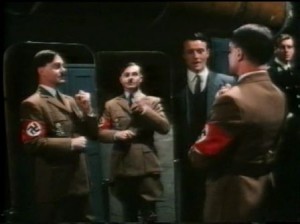Wolters, a long time Speer friend and supporter extending throughout Speer’s 20 year prison term in Spandau, had the entire document recopied to protect his friend, excluding the incriminating passages. Although initially done without Speer’s knowledge Speer was informed after his release from prison in 1966, to which he gave his tacit approval.
It wasn’t until 1979 that scholars began to catch on to the discrepancies, found when comparing the Koblenz archival copy to portions held in other archives. Ultimately, Albert Speer turned on his loyal friend and took legal action against Wolters- legal action which stopped only on Speer’s sudden death in 1981.
 Speer ultimately was perhaps just as involved and aware of all post 1940 or so as there are numerous accounts of Speer visits areas or attending conferences were truly heinous events were done or discussed. And if nothing else, as the true technocrat he obviously knew where his forced labor was coming from.
Speer ultimately was perhaps just as involved and aware of all post 1940 or so as there are numerous accounts of Speer visits areas or attending conferences were truly heinous events were done or discussed. And if nothing else, as the true technocrat he obviously knew where his forced labor was coming from.
He just was fortunate enough – perhaps clever enough as well – to refashion himself for most of his post prison life.
Needless to say, there is much to say about the dynamic relationship between Albert Speer and Adolf Hitler and more about the dichotomy of Speer himself. Much more that others have said much better than we could. The most fitting end note is that of Speer the architect, there is little tangible evidence remaining. Outside of plans and sketches, only a row of lampposts in Berlin and the scattered remains of the Zeppelinfeld in Nuremberg exist for the casual tourist. For the more adventurous, he also redesigned the interior of the German Embassy in London, which is now occupied by the Royal Society. As you’d imagined the Nazi imagery therein has been either removed or covered.
Recommended for the history buffs as when looked at purely as a film this is merely average. Most likely this is the type of production which, unless Spiderman can be worked in, won’t come again. Only available on a very rare VHS release.